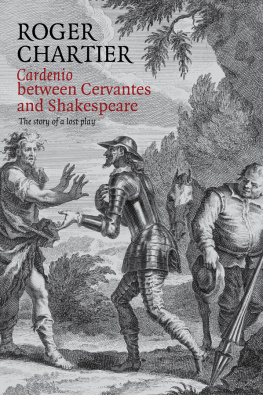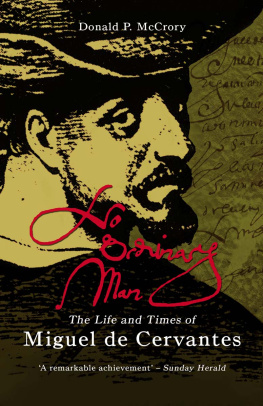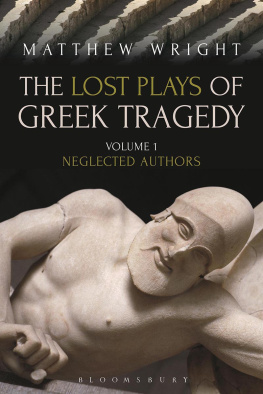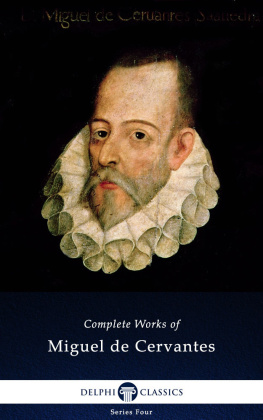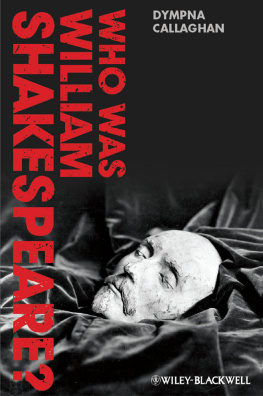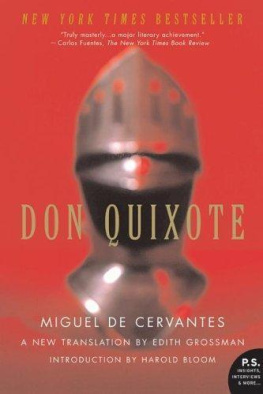
Table of Contents
First published in French as Cardenio entre Cervantes et Shakespeare Editions Gallimard, Paris, 2011
This English edition Polity Press, 2013
Polity Press
65 Bridge Street
Cambridge CB2 1UR, UK
Polity Press
350 Main Street
Malden, MA 02148, USA
All rights reserved. Except for the quotation of short passages for the purpose of criticism and review, no part of this publication may be reproduced, stored in a retrieval system, or transmitted, in any form or by any means, electronic, mechanical, photocopying, recording or otherwise, without the prior permission of the publisher.
ISBN-13: 978-0-7456-6184-1
ISBN-13: 978-0-7456-6185-8 (pb)
ISBN-13: 978-0-7456-8332-4 (epub)
ISBN-13: 978-0-7456-8331-7 (mobi)
A catalogue record for this book is available from the British Library.
The publisher has used its best endeavours to ensure that the URLs for external websites referred to in this book are correct and active at the time of going to press. However, the publisher has no responsibility for the websites and can make no guarantee that a site will remain live or that the content is or will remain appropriate.
Every effort has been made to trace all copyright holders, but if any have been inadvertently overlooked the publisher will be pleased to include any necessary credits in any subsequent reprint or edition.
For further information on Polity, visit our website: www.politybooks.com
Illustration Acknowledgements
Figures 19: Madrid, Banco de imgenes del Quijote (www.qbi2005.com).
Figure 10: Courtesy of the E. Urbina Cervantes Collection at the Cushing Memorial Library and Archives, Texas A&M University.
Figures 1113: Texas A&M University, Center for the Study of Digital Libraries (www.csdl.tamu.edu).
Figures 1416: Early English Books Online (http://eebo.chadwyck.com).
Introduction: Reading a Text That Does Not Exist
The theme of a manuscript discovered by chance, the writer of which is only a copyist or editor, has long haunted the imagination of authors and readers alike. Such was the fate of a story translated from Arabic about which the present book will have much to say. The story is that of Don Quixote of La Mancha, written by Cide Hamete Benengeli, an Arab historian. As is well known, the original author, the one who does not wish to remember the name of the village where the hidalgo lived, abruptly breaks off his account in chapter VIII of the book, at the point where the fight between Don Quixote and the Biscayan is about to begin. He does so on account of the dearth of documentation relating to the outcome of the battle and the later adventures of the knight errant. Frustrated in his reading and convinced that some sage has written of the further prowess of this knight, the second author, as the text puts it, sets out in quest of the end of the story. This he discovers in Toledo, in a manuscript written in Arabic, which he has translated by a morisco aljamiado, a converted Muslim who knows the Castilian language. The account by the Arab historian can now be set out, embedded in the added commentaries of this second author, the first person to read the story translated into Spanish.
In the course of this narrative, the presence of books within the book blurs the frontiers between works that truly exist and others that are solely the fruit of Cervantes' imagination. Such is the case in the inn run by Juan Palomeque, when the latter goes off to fetch from his room a little trunk forgotten there by some traveller. This contains two chivalric novels (Don Ciriglio de Tracia and Felixmarte de Hircania), one historical chronicle (Historia del gran Capitn Gonzalo Hernndez de Crdoba) and some papers written in a very fine hand, which are the eight pliegos or gatherings of the Novella of the Curious Impertinent. The curate later reads this aloud to his travelling companions (apart from Don Quixote, who is asleep), and we shall encounter it again in the course of the present enquiry. but which he invests with dizzying power.
Certain contemporary writers have borne this in mind and have, in their turn, mobilized certain procedures that can bring into existence books that are purely imaginary. Roberto Bolao has put together a whole alarming library of such books in his Nazi Literature in the Americas. Roberto Bolao proposes a series of short biographies of the authors of the books listed in the Epilogue. Let us take two examples. The biography of Silvio Salvtico, born in Buenos Aires in 1901, who died in that city in 1994, and who was the author of Sad Eyes published in 1929, is accompanied by the biographies of three other authors, all fortunately just as imaginary, under the heading Forerunners and Figures of the Anti-Enlightenment. The passage starts as follows:
As a young man Salvtico advocated, among other things, the re-establishment of the Inquisition; corporal punishment in public; a permanent war against the Chileans, the Paraguayans, or the Bolivians as a kind of gymnastic for the nation; polygamy; the extermination of the Indians to prevent further contamination of the Argentinean race; curtailing the rights of any citizen with Jewish blood; a massive influx of migrants from Scandinavian countries in order to effect a progressive lightening of the skin color, darkened by years of promiscuity with the indigenous population; life-long writer's grants; the abolition of tax on artists' incomes; the creation of the largest air force in South America; the colonization of Antarctica; and the building of new cities in Patagonia. He was a soccer player and a Futurist.
Zach Sodenstern (Los Angeles, 19622012), the author of A, for his part, belonged to the family of science-fiction writers and was the successful author of the sagas of Gunther OConnor and the Fourth Reich, in which the hero is Flip, a mutant, stray German Shepherd [Alsatian dog] with telepathic powers and Nazi tendencies. His novel The Simbas is a surreptitious manifesto directed against African Americans, Jews and Hispanics that gave rise to diverse and contradictory interpretations. Roberto Bolao has, on behalf of his readers, himself read these terrifying works which have existed only in his nightmares but the shadows of which have haunted the dictatorships of America and now threaten the future.
Another way of bringing into existence works that were never written is to imagine how very real authors might have composed them. This is what Ricardo Piglia did when he sketched in how Hemingway and Kafka would have told the story of Cries and Whispers, the origin of which is recalled by Bergman: First I saw three women dressed in white, in a room in the clear light of dawn. They were very mysterious, moving about and whispering into one another's ears, and I could not hear what they were saying. The scene haunted me for a whole year. In the end I realized that the three women were waiting for the death of a fourth, who was in the other room. They were taking it in turns to watch over her. As this Argentinian author saw it, Hemingway would have recounted an ordinary conversation between the three women, without even mentioning that they had assembled to watch over one of their sisters, who was dying. Kafka, on the contrary, would have told the story from the point of view of the woman who was dying and who could not bear hearing the deafening murmurs of her sisters who were whispering and talking about her in the next room. This is how texts are suggested that might have existed and whose continuation a reader might imagine for himself.
Next page
